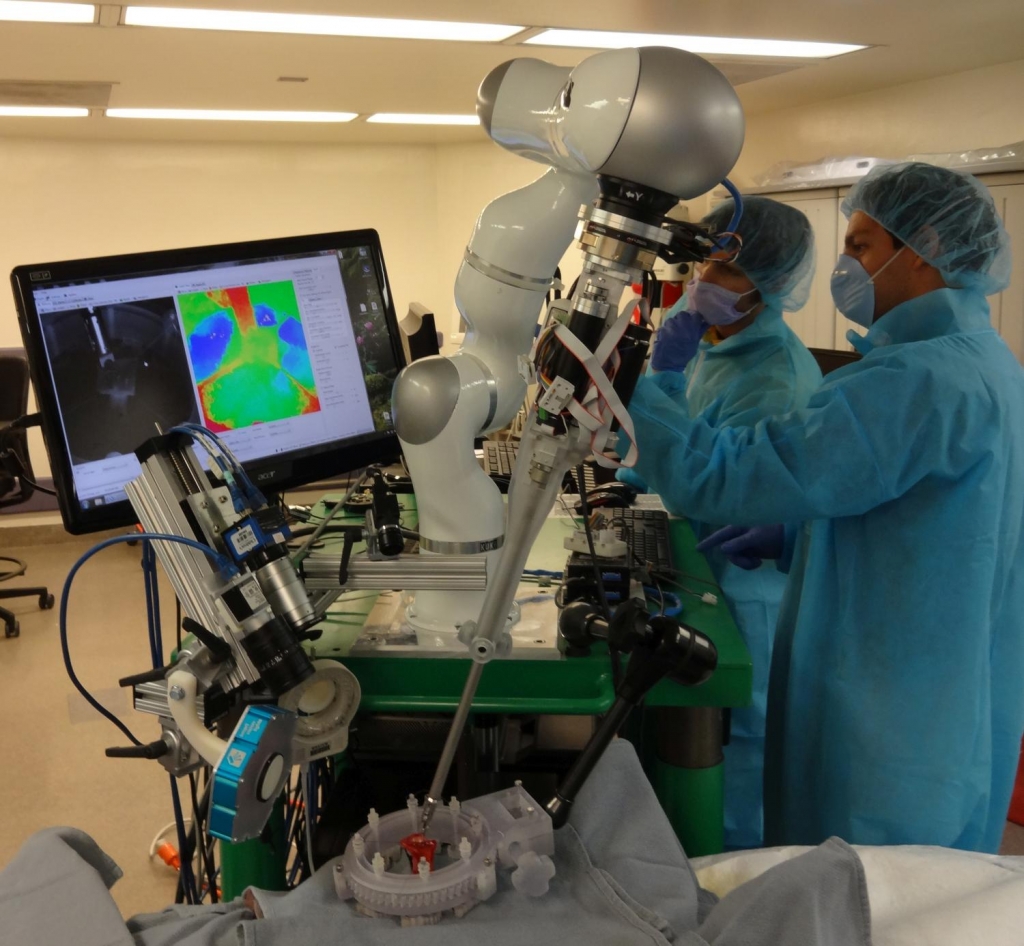-
Tips for becoming a good boxer - November 6, 2020
-
7 expert tips for making your hens night a memorable one - November 6, 2020
-
5 reasons to host your Christmas party on a cruise boat - November 6, 2020
-
What to do when you’re charged with a crime - November 6, 2020
-
Should you get one or multiple dogs? Here’s all you need to know - November 3, 2020
-
A Guide: How to Build Your Very Own Magic Mirror - February 14, 2019
-
Our Top Inspirational Baseball Stars - November 24, 2018
-
Five Tech Tools That Will Help You Turn Your Blog into a Business - November 24, 2018
-
How to Indulge on Vacation without Expanding Your Waist - November 9, 2018
-
5 Strategies for Businesses to Appeal to Today’s Increasingly Mobile-Crazed Customers - November 9, 2018
Robot stitches tissue by itself, a step to more automated OR
The so-called Smart Tissue Autonomous Robot (STAR) succeeded in suturing and reconnecting bowel segments in living pigs, a procedure known as intestinal anastomosis, and all the animals survived with no complications, they reported Wednesday in the US journal Science Translational Medicine.
Advertisement
“The outcomes were surprising to us that consistence throughout performance was better than surgeons”, said Peter Kim, associate surgeon-in-chief at Children’s National Health System in Washington.
The team tested the robot on a series of tissues from pigs, whose tissues aren’t wildly different from our own. It then chooses from a variety of surgical techniques programmed into its database, and carries the action out with, naturally, machine-like precision, speed, and efficiency.
It’s not quite the medical robots from Star Wars, but it’s a step in that direction.
Watch the video below that shows a robot surgeon sewing up intestines of piglets by itself!
Under the watchful eyes of surgeons, STAR took on a series of suturing assignments, starting with pig cadavers and ending up with operations on four live piglets. The consultant painted the area to be worked on with lines of florescent paint, and the robot went to work.
Human surgeons wont be out of a job any time soon, but those with an interest and aptitude for robots will do particularly well in the robotic future of operating rooms.
STAR was compared to expert surgeons performing the same task; laparoscopy; and robot-assisted surgery using the Da Vinci system. When the resulting sutures were compared, STAR’s stitches were more consistent and more resistant to leaks. Its mistake rate was comparable to hand-sewn suturing. However, Kim said time was not of the essence for the proof-of-concept experiment.
“It can be fully autonomous for the task we want to do”. Putting a robot to work in this form of surgery “really levels the playing field”. “While in a technical sense, semi-autonomous suturing is a “grand challenge” problem of surgical robotics, clinically much suturing and bowel anastomosis is done by staplers which can do the whole thing in seconds”, he wrote in an email. “Nevertheless, the paper is a breakthrough that shows supervised autonomy could be safe and effective”. That path would be eased, they said, by the fact that some version of virtually all the system’s component technologies are already in broad medical use, and have therefore come before the FDA before. “With the right partner, some or all of this technology can be incorporated into commercially available, clinically applicable tools, probably within the next two, no more than three years”, he said. In 2012 doctors used the system to perform more than 350,000 surgeries in USA hospitals, a 60 percent increase from 2010.
Leonard and his team developed a robot with a 3D imaging system and a near-infrared sensor to spot fluorescent markers along the edges of the tissue to keep the robotic suture needle on track. The future, or at least the future envisioned here, is one of harmony and cooperation between humans and robots. Kim cited SpaceX founder Elon Musk’s plan to colonize Mars as an example. That was the whole notion behind the initial DARPA investment for surgical robots in the battlefield, as a trauma pod.
Advertisement
But being able to improve on such surgeries “could potentially reduce complications and improve the safety and efficacy of soft tissue surgeries, about 45 million of which are performed in the U.S. each year”, according to the study led by doctors at the Children’s National Health System in Washington, DC and Johns Hopkins University in Baltimore, Maryland. Other authors include Ryan Decker, Justin Opfermann, Simon Leonard and Axel Krieger.





























